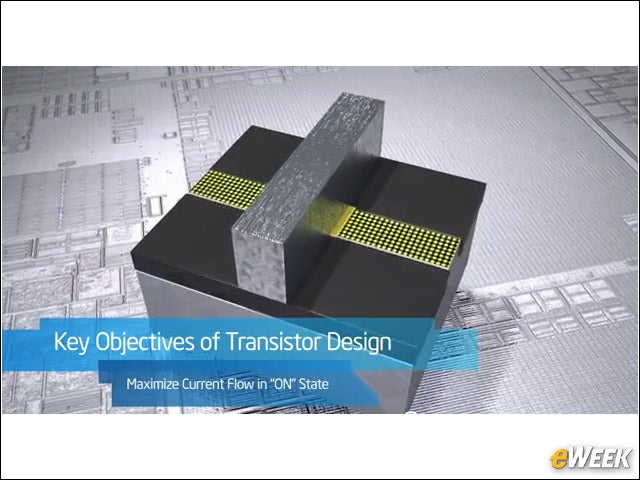eWEEK content and product recommendations are editorially independent. We may make money when you click on links to our partners. Learn More.
1Tri-Gate 3D Transistors: Low Power or High Performance
Intel Senior Fellow Mark Bohr, who’s been working on the 3D transistors for a full decade, said the capabilities give chip designers the flexibility to choose transistors targeted for low power or high performance, depending on the application. “Of course, the Tri-Gates are very capable at both,” Rohr said.
2Working on Vanishingly Small Nanometer Scales
This image shows the relative size of a typical chip (left) compared with a human hair (right), which is about 100,000 nanometers in diameter. Remember that a nanometer is one-billionth of a meter. The Tri-Gate transistor is a mere 22 nanometers in size. A tiny representation of Bohr separates the two items.
3Intels Standard 32nm Processors
4The Inner Workings of a 32nm Transistor
5A Few Nanometers Make a Difference
One might not think that a mere 10nm—the difference between 32nm- and 22nm-size transistors—make that much of a difference when sitting aboard the processor, but as you can see from this image, there are a lot more of the smaller transistors that can be placed in the honeycomb-like fixture on the chip.
6The 32nm Processor: On Its Way Out?
7Intel Senior Fellow Mark Bohr with Tri-Gate
8Tri-Gate Transistors Cut Power Usage by Half
9The Incredibly Shrinking Intel Processors
10Tri-Gate in Cross Section
A cross-section look at the Tri-Gate shows the base of the silicon substrate, an oxide layer above that, and the gate, drain and power flow on top of the transistor. The channels of electricity on three sides of the vertical fin structure make up the 3D nature of the transistor.









